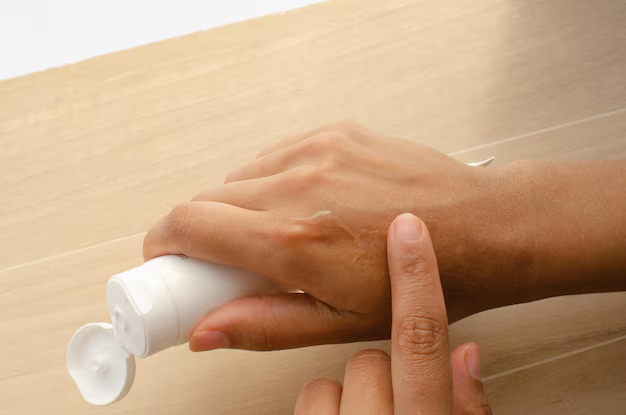The Ultimate Guide to Applying Arthritis Liquid Gel for Effective Relief
Arthritis can be a daunting condition, affecting daily life with persistent pain and discomfort. For many, arthritis liquid gels offer a practical solution to alleviate symptoms. Whether you're new to these products or looking to refine your self-care routine, applying arthritis liquid gel effectively can make a world of difference. In this comprehensive guide, we'll explore how to apply arthritis liquid gel properly and provide insights to enhance its effectiveness.
🏷️ Understanding Arthritis Liquid Gels
What Are Arthritis Liquid Gels?
Arthritis liquid gels are topical medications designed to relieve pain and reduce inflammation in joints affected by arthritis. These gels typically contain active ingredients such as menthol, camphor, or nonsteroidal anti-inflammatory drugs (NSAIDs), which can provide a cooling sensation and alleviate discomfort.
How Do They Work?
The active ingredients in these gels penetrate the skin to deliver localized relief. This can result in decreased pain, swelling, and improved mobility for the user. Unlike oral medications, topical gels minimize systemic side effects, making them a popular choice among arthritis sufferers.
🌿 Preparing to Apply Arthritis Liquid Gel
Check the Ingredients
Before applying any gel, inspect the label for active ingredients. Ensure that you're not allergic to any components. Understanding what’s in the product ensures safety and effectiveness.
Conduct a Patch Test
Apply a small amount of the gel to a healthy area of skin and wait 24 hours. This helps determine any potential allergic reactions or irritation.
Clean the Application Area
Wash and dry the skin thoroughly where you'll apply the gel. Clean, dry skin ensures better absorption and effectiveness.
🖐️ How to Apply Arthritis Liquid Gel Effectively
Step-by-Step Application
Dispense the Gel: Squeeze a small amount onto your fingertips. The exact quantity depends on the area needing relief, but starting small is generally recommended.
Apply to the Affected Area: Gently rub the gel onto the affected joint in a circular motion. Allow your skin to absorb it naturally.
Massage the Area: Continue to massage the area gently. This can stimulate blood flow, enhancing the gel’s absorption.
Wash Hands: After application, wash your hands thoroughly to avoid unintended contact with sensitive areas like the eyes or mouth.
Frequency of Application
Typically, arthritis gels can be applied three to four times daily, but always follow the specific instructions on your product’s packaging. Overuse can lead to unwanted side effects or reduced efficacy.
🚫 Important Dos and Don’ts
Dos
- Do Store Properly: Keep the gel in a cool, dry place away from direct sunlight to maintain its efficacy.
- Do Monitor for Side Effects: If you experience unusual irritation or no improvement, consult a healthcare provider.
Don’ts
- Don’t Apply to Broken Skin: Avoid using the gel on cuts, wounds, or areas with rash.
- Don’t Cover Immediately: Allow the gel to absorb into the skin before covering the area with clothing or bandages to prevent unwanted chemical reactions or irritation.
🔎 Exploring Related Self-Care Techniques
Incorporating Other Therapies
When applying arthritis gels, consider complementing treatment with gentle exercises or physical therapy. Exercise enhances joint flexibility and overall mobility.
Diet and Lifestyle Adjustments
Maintaining a balanced diet rich in anti-inflammatory foods, such as fruits and vegetables, can aid in managing arthritis symptoms. Staying active and reducing stress also play crucial roles in managing arthritis effectively.
📋 Quick Tips for Using Arthritis Liquid Gel
🟢 Always read the product label before use.
🔵 Perform a patch test to avoid unexpected reactions.
🟡 Store the gel properly to ensure stability and effectiveness.
🔴 Be consistent with application for best results.
✨ Using Visualization to Manage Arthritis
Visualizing ease of movement and a reduction in pain is a powerful mental tool. This doesn't replace medical treatment but supports holistic health. Visualization can create a positive outlook, crucial for overcoming chronic pain challenges.
🤔 Answering Your Questions
Is It Safe to Use Arthritis Gel Long-Term?
Arthritis gels are generally safe for long-term use if applied as per instructions. However, regular evaluations by healthcare providers ensure that the treatment remains effective and safe over time.
Can I Use Multiple Treatments Together?
Combining different arthritis management strategies, such as using gels alongside prescribed medications, is often effective. Always coordinate with healthcare professionals to tailor approaches specifically to your needs.
🔄 The Takeaway: Empower Your Routine
By incorporating arthritis liquid gels into your self-care routine, you can actively reduce discomfort and enhance mobility. Be patient and consistent with your approach while seeking tailored advice from healthcare providers to optimize your arthritis management.
Embrace the therapeutic journey with a mix of confidence and optimism, while empowering yourself with the knowledge to manage arthritis effectively. Remember, consistency in application and a positive mindset are your best companions in this journey.

Related Topics
- a Septic Arthritis
- Are Bananas Bad For Arthritis
- Are Tomatoes Bad For Arthritis
- Can An Inflamed Nerve Cause Arthritis
- Can An Inflamed Nerve Cause Arthritis In Dogs
- Can An x Ray Show Arthritis
- Can Arthritis Be Cured
- Can Arthritis Be Reversed
- Can Arthritis Become Septic After Infection From Injection
- Can Arthritis Cause Numbness